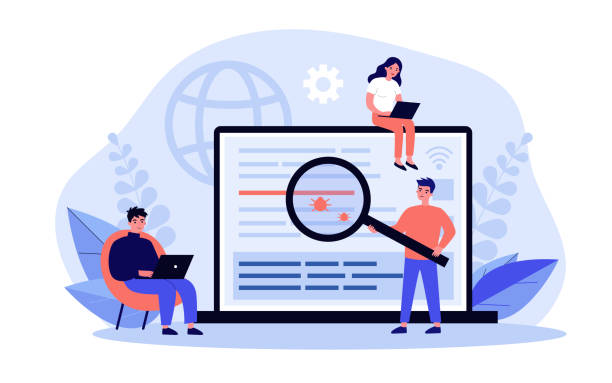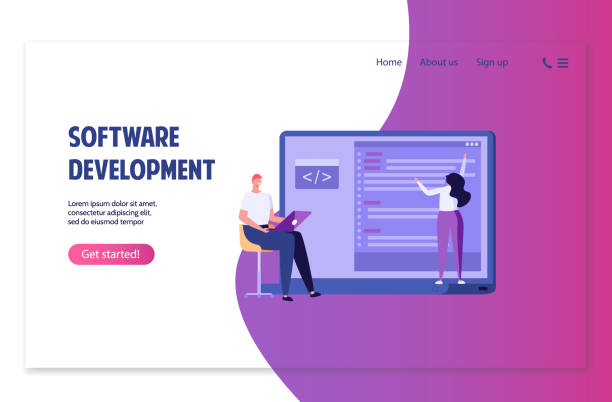Introduction to Multilingual Website Design: A Path to Global Markets

In today’s world, where #theInternet has removed borders and #competition in the global market has peaked, having a multilingual website is no longer an option, but a necessity.
The concept of multilingual website design goes beyond simply translating content into multiple languages; it is a comprehensive strategy for effective communication with international audiences, increasing access to your products and services, and ultimately, expanding your brand’s global presence.
This approach allows you to overcome language barriers and convey your message in a way that is understandable and appealing to different cultures and languages.
Given that billions of people worldwide use the internet and speak various languages, limiting your business to just one language means losing a huge portion of market potential.
An effective multilingual website design means understanding the concepts of Internationalization and Localization; not just translating words, but adapting content to cultural nuances, currency, date and time formats, and even measurement systems specific to each region.
This not only helps #users feel more comfortable but also increases your brand’s credibility and trust.
The importance of investing in multilingual website design is increasingly clear for any business with a global vision.
Are your online sales not what you expected? With Rasawep, solve the problem of low sales and poor user experience forever!
✅ Increase visitor-to-customer conversion rate
✅ Create an enjoyable user experience and increase customer trust
⚡ Get your free consultation now!
Why Does Your Business Need a Multilingual Website?
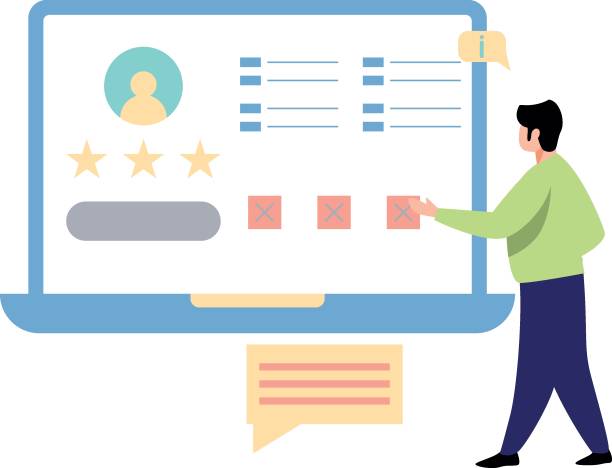
In today’s digital world, limiting your audience to a specific language or geographical region means missing out on countless growth opportunities.
Multilingual website design enables your business to conquer new horizons and reach emerging markets.
The first and most important reason is expanding customer reach.
Currently, over half of internet users worldwide do not speak English.
If your website is only available in English, you will lose a significant portion of your potential customers.
By providing content in their native languages, you not only provide convenience but also build deeper connections with them.
The second reason is increased sales and revenue.
Research has shown that users are more inclined to purchase from websites that offer services in their native language.
This is especially true for complex products or services, where a precise understanding of information is crucial for purchase decisions.
Furthermore, multilingual website design can create a significant competitive advantage for you.
In markets where many competitors still operate monolingually, you will surpass them by offering a multilingual experience and be recognized as an innovative and global brand.
Improving SEO and search engine rankings at an international level is another important benefit.
Search engines like Google prioritize multilingual and localized websites, which can dramatically increase your organic traffic.
Ultimately, investing in multilingual website design demonstrates your respect for international customers and your commitment to providing a seamless and inclusive experience for everyone.
Challenges and Solutions for Multilingual Website Design

The process of multilingual website design, while offering numerous benefits, also comes with specific challenges that require precise planning and correct execution.
One of the most important challenges is managing URLs and site structure for international SEO.
Choosing between subdomains, subdirectories, or country-code top-level domains (ccTLDs) can significantly impact your site’s ranking in search engines.
For example, `en.example.com` versus `example.com/en` or `example.co.uk`.
Each of these options has its own advantages and disadvantages in terms of costs, SEO, and management.
Another challenge is accurate and high-quality content translation.
Machine translation often cannot correctly convey cultural nuances and specific terminology, so using native translators specialized in your field is essential.
Furthermore, managing and updating content in multiple languages can be complex and requires a robust and multilingual Content Management System (CMS).
Issues related to text direction (RTL/LTR) for languages like Persian or Arabic versus English, or Responsiveness on different screen sizes, require special technical attention.
Maintaining visual consistency and user experience (UX) across all language versions is also of high importance.
To overcome these challenges, using hreflang tags for search engines to identify different language versions, implementing a multilingual CMS, and investing in high-quality human translation are considered fundamental solutions.
Choosing the right site architecture and appropriate tools is key to success in multilingual website design.
Below is a comparison of URL strategies for multilingual websites:
| Strategy | URL Example | Advantages | Disadvantages |
|---|---|---|---|
| Subdirectory | example.com/fa/ | Stronger SEO (links from main domain), easier management | No explicit country in URL, may be less intuitive for some users |
| Subdomain | fa.example.com | Clear language separation, local server hosting, independent server management | May have slightly weaker SEO than subdirectories (requires separate link building), more management complexity |
| Country-code Top-Level Domain (ccTLD) | example.ir, example.de | Best for local SEO, higher trust from local users, strong regional positioning | High cost (requires purchasing and managing multiple domains), difficulty in link building, requires separate hosting |
Choosing the Best Strategy for Multilingual Implementation
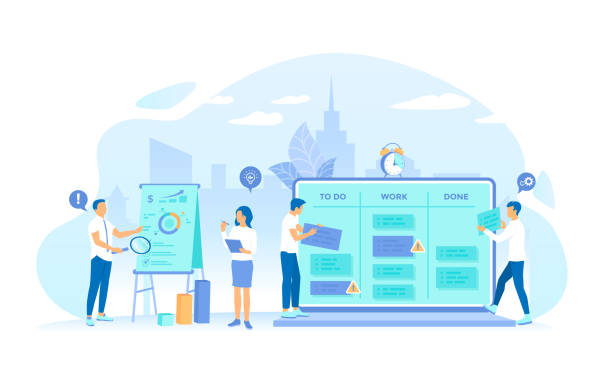
Choosing the right strategy for implementing multilingualism on your website is a crucial decision that directly impacts SEO, user experience, and the ease of future site management.
Three main approaches include using subdirectories (e.g., `yourdomain.com/en/`), subdomains (e.g., `en.yourdomain.com`), and country-code top-level domains (ccTLDs) (e.g., `yourdomain.de`).
Each of these options has its own advantages and disadvantages.
Subdirectories are often considered the preferred option due to their simplicity in implementation and management, as well as benefiting from the SEO authority of the main domain.
Google tends to treat all pages under a single domain as part of one website, which helps improve SEO rankings.
Subdomains offer more flexibility in hosting and can be useful for separating entirely different content or even for very large-scale websites, but they may require more effort to build authority for each subdomain from an SEO perspective.
Country-code top-level domains (ccTLDs) send the strongest signal for local SEO to search engines and build the highest level of trust among local users, but they come with higher costs and are more complex to manage, as each domain requires separate hosting and SEO configurations.
The final choice depends on various factors: budget, SEO goals (global or local), your team’s organizational structure, and the volume of content you plan to translate.
For an optimized multilingual website design, it is important to carefully evaluate each option and choose the best path based on your business’s specific needs.
Considering foresight and scalability is also critical in this decision.
Disappointed with your e-commerce site’s low conversion rate? Rasawep transforms your online store into a powerful tool for attracting and converting customers!
✅ Significant increase in visitor-to-buyer conversion rate
✅ Unparalleled user experience to boost customer satisfaction and loyalty⚡ Get a free consultation from Rasawep now!
Multilingual SEO: Key Tips for Success

To ensure your multilingual website is visible in search engines, implementing a strong multilingual SEO strategy is essential.
This process goes beyond merely translating keywords and involves several technical and content aspects.
The first step is the correct use of hreflang tags.
These tags help search engines like Google identify different language versions of a page and direct each user to the correct and relevant version based on their language and geographical region.
Incorrect hreflang implementation can lead to duplicate content issues and reduced SEO rankings.
The second key tip is keyword research for each language.
Keywords that are effective in one language may have a different meaning or not be used at all in another language.
Localization teams or native SEO specialists need to conduct keyword research to ensure you match the vocabulary and phrases your target audience actually searches for.
Also, paying attention to Local SEO for each geographical region is important.
This includes optimizing for local searches, listing the business in Google My Business, and other local directories.
Correct URL management, as explained in the previous section, is vital for multilingual SEO.
Ensure your URL structure is logical, readable, and optimized for each language.
Additionally, strong internal and external link building, and optimizing site loading speed, are essential for all language versions.
Finally, high-quality and valuable content in each language is the foundation of multilingual SEO success.
This comprehensive approach to multilingual website design helps ensure it is not only technically sound but also stands out in search results.
Content and Translation Management in Multilingual Websites

One of the biggest challenges in multilingual website design is the efficient management of content and its translation process.
Without a clear strategy, this section can quickly turn into a logistical nightmare.
Choosing a suitable Content Management System (CMS) that adequately supports multilingualism is the first and crucial step.
Platforms like WordPress with plugins like Polylang or WPML, or enterprise systems like Drupal or Sitecore, offer powerful capabilities for managing different language versions of content.
It is important that your chosen CMS allows for the separate creation and management of pages, posts, categories, and even navigation menus for each language.
Next, the translation process itself is of high importance.
Using native and professional translators who are familiar with the specific culture and terminology of each region is essential to maintain content quality and accuracy.
Machine translation can be useful for initial translations or non-critical content, but for core and impactful content, human editing and review are necessary.
Organizing a translation workflow that includes translation, editing, review, and publication steps can contribute to greater efficiency.
Translation Management Systems (TMS) can also automate this process and ensure consistency of vocabulary and terminology across all translations.
Regular content updates across all language versions are also an ongoing challenge.
With a systematic approach to content and translation management, your multilingual website design can become a powerful global marketing tool that always provides fresh and relevant content to its audience.
User Experience (UX) in Multilingual Websites

The success of a multilingual site is not limited to accurate content translation; it depends on providing a flawless user experience (UX) tailored to the culture and language of each audience.
The first principle is simplicity and clarity in language selection.
Users should be able to easily find and select their desired language without needing to search.
This is usually done via a button or dropdown menu in the header or footer of the site.
Ensure that country flags are not used for language selection, as flags do not always represent a language (for example, Spanish is spoken in several countries).
Using the full name of the language (e.g., “فارسی” instead of “FA”) is recommended.
User Interface (UI) design must be flexible to accommodate different text lengths in various languages; for instance, text that is short in English might be much longer in German and affect the page layout.
Additionally, attention to text direction (RTL/LTR) for languages like Persian and Arabic, which are read from right to left, is essential.
This change affects not only text but also the direction of icons, images, and even the overall page structure.
Content localization goes beyond mere translation; it includes adapting to currency, date and time formats, phone numbers and addresses, and even cultural colors and symbols that might have different meanings in various cultures.
Ensuring fast loading speeds for users worldwide, even with localized content, is of paramount importance.
By focusing on these UX aspects in multilingual website design, you can create a truly inclusive and engaging experience for every user, regardless of their language or location.
Below, you can see the UX Considerations table for multilingual sites:
| UX Aspect | Challenge | Solution |
|---|---|---|
| Language Selection | Hidden or confusing language selection option | Placement in a clear location (header/footer), using full language name instead of flag, automatic language detection (with option to change) |
| Text Length and User Interface (UI) Design | Different text lengths in various languages, layout disruption | Flexible design with sufficient space for text growth, using readable fonts in all languages |
| Text Direction (RTL/LTR) | Failure to observe correct text direction for languages like Persian and Arabic | Using appropriate CSS for RTL, mirroring visual elements (icons, sliders) |
| Localized Content | Translating words only, without considering culture, currency, date, etc. | Full localization including currency, date format, relevant images and cultural symbols |
Maintenance and Updates for Multilingual Sites

After the completion of multilingual website design and its launch, the work is not over; rather, the important phase of continuous maintenance and updates begins.
A dynamic website requires fresh and up-to-date content, and this becomes more complex for multilingual sites, as you must ensure that all language versions are updated simultaneously.
Managing updates is one of the main challenges.
Whenever new content is added in the original language or an existing content is modified, these changes must be quickly translated and published in all other languages.
This process requires a robust Content Management System (CMS) with multilingual capabilities that can simplify the translation workflow and ensure consistency across languages.
Monitoring website performance across all language versions is also vital.
This includes checking page loading speeds, form functionality, broken links, and display issues across different browsers and devices.
Technical problems in one language version can negatively impact the overall user experience of the site.
Furthermore, regular international SEO monitoring is essential.
Keyword rankings, organic traffic, and conversion rates should be tracked separately for each language to optimize your SEO strategies.
User feedback in different languages should also be collected and analyzed to identify and improve the site’s strengths and weaknesses.
By adhering to a regular maintenance and update schedule, your multilingual website design can remain a valuable asset and an efficient tool for your business in global markets for a long time.
Does your current website convert visitors into customers or drive them away? Solve this problem forever with professional corporate website design by Rasawep!
✅ Build strong credibility and branding
✅ Attract target customers and increase sales
⚡ Get a free consultation now!
The Future of Multilingual Website Design and New Trends

The world of multilingual website design is constantly evolving, with new trends emerging that are shaping the future of this field.
One of the most important of these trends is the advancement of Artificial Intelligence (AI) and Machine Learning in translation.
Although machine translation cannot yet fully replace human translation, tools like Google Translate and DeepL have become increasingly accurate and natural.
These technologies can accelerate the initial translation process and reduce costs, allowing teams to focus on more nuanced editing and localization.
Voice Search is another significant trend impacting multilingual design.
With the increasing use of voice assistants like Siri, Alexa, and Google Assistant, optimizing content for voice searches in different languages becomes crucial.
This means a greater focus on natural language, long-tail keywords, and direct answers to questions.
Additionally, personalized and adaptive user experience (UX) for each language and culture is expected to become more important.
This includes providing relevant content based on the user’s geographical location, interests, and even browsing history.
Augmented Reality (AR) and Virtual Reality (VR) may also play an increasing role in the future of multilingual websites, especially in industries such as e-commerce and tourism, which can offer immersive and multi-dimensional experiences in various languages.
Finally, focusing on sustainability and social responsibility in multilingual content, especially for global companies, will gain more importance.
These trends indicate that multilingual website design is moving towards becoming smarter, more personalized, and more comprehensive, requiring continuous updating of knowledge and approaches from designers and developers.
Conclusion and Final Recommendations for Successful Multilingual Website Design
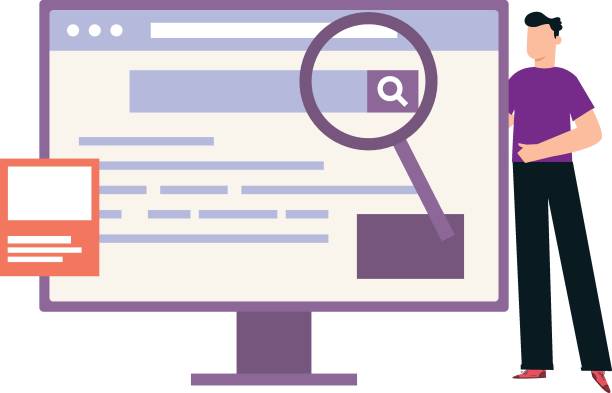
Multilingual website design is a strategic investment for any business aiming to expand its presence in global markets.
This process goes beyond mere word translation and involves a deep understanding of cultural, technical, and SEO differences.
To achieve a successful multilingual website, adherence to several key points is essential.
Firstly, precise planning and selecting the appropriate URL strategy (subdirectory, subdomain, or ccTLD) from the outset is crucial, as it directly impacts SEO and the overall site structure.
Secondly, investing in high-quality translation and localization of content by professional native translators is of paramount importance.
This not only ensures accuracy but also helps build trust and deeper connections with local audiences.
Thirdly, special attention to international SEO, including the correct use of hreflang tags and keyword research for each language, is necessary to ensure your site’s visibility in search engines.
Fourthly, User Experience (UX) should be prioritized.
The design should be flexible for all languages, including right-to-left languages, and consider cultural elements.
Fifthly, choosing a Content Management System (CMS) with strong multilingual capabilities facilitates content management and future updates.
Finally, continuous maintenance and updating of the site, performance monitoring, and adaptation to new trends (such as AI and voice search) are vital for maintaining competitiveness and long-term success.
By implementing these recommendations, your multilingual website design will become a powerful tool for reaching more audiences and growing your business on a global scale.
Frequently Asked Questions
| Question | Answer |
|---|---|
| What is multilingual website design? | It is the design of a website whose content is available to users in several different languages, allowing users to select their preferred language. |
| Why is a multilingual website important? | To reach international audiences, increase website traffic, improve user experience for non-Persian speaking visitors, and expand business in global markets. |
| What are the benefits of having a multilingual website? | Increased international SEO, attracting new customers from different countries, enhancing business credibility and professionalism, and reducing bounce rates by providing understandable content. |
| What are the methods for implementing a multilingual website? | Using subfolders (e.g., example.com/en/), subdomains (e.g., en.example.com), or separate top-level domains for each language (e.g., example.com and example.de). |
| Which URL structure is best for international SEO? | Subdirectories (e.g., example.com/en/) are often preferred for SEO due to the consolidation of the main domain’s authority, although each method has its advantages and disadvantages. |
| How does a multilingual website affect SEO? | By providing content in different languages, the site appears in local search results for those languages, click-through rates and traffic increase, and the overall domain authority improves. Correct use of hreflang tags is very important. |
| How is content translation managed? | Professional translators, machine translation tools (with human editing), or Content Management Systems (CMS) with built-in multilingual capabilities or relevant plugins can be used. |
| What are the common challenges in multilingual website design? | Managing translated content, maintaining design consistency across different languages, compatibility with right-to-left (RTL) languages like Persian and Arabic, optimizing SEO for each language, and choosing the appropriate URL structure. |
| How do I manage text direction (LTR/RTL) on a multilingual site? | For right-to-left languages (like Persian), you need to apply specific CSS styles to change text direction, element layout, and table direction. This is often done using the `direction: rtl;` property and other related settings. |
| How can users change the site’s language? | Typically, by using a button, dropdown menu, or language selector widget clearly placed in the site’s header or footer. Automatic detection of the user’s browser language and suggesting a language change is also common. |
And other services of Rasawep Advertising Agency in the field of advertising
Smart Link Building: A professional solution for digital branding focusing on precise audience targeting.
Smart Content Strategy: Transform user engagement with precise audience targeting.
Smart Social Media: A creative platform to improve customer behavior analysis with Google Ads management.
Smart Marketplace: A creative platform to improve website traffic increase with attractive UI design.
Smart Reportage: A creative platform to improve online growth with intelligent data analysis.
And over a hundred other services in the field of internet advertising, advertising consultation, and organizational solutions
Internet Advertising | Advertising Strategy | Advertorial
Resources
Complete Guide to Multilingual Website DesignCreating a Multilingual Website with WordPressBenefits of a Multilingual Website for BusinessDeveloping a Global Website with Multilingual Capability
🌐 For the growth and visibility of your business in the online space, Rasawep Afarin Digital Marketing Agency is with you, offering comprehensive and specialized services. Among our services is corporate website design in accordance with the latest international standards.
📍 Tehran, Mirdamad Street, next to Bank Markazi, Kazeroun Jonubi Alley, Ramin Alley, No. 6


